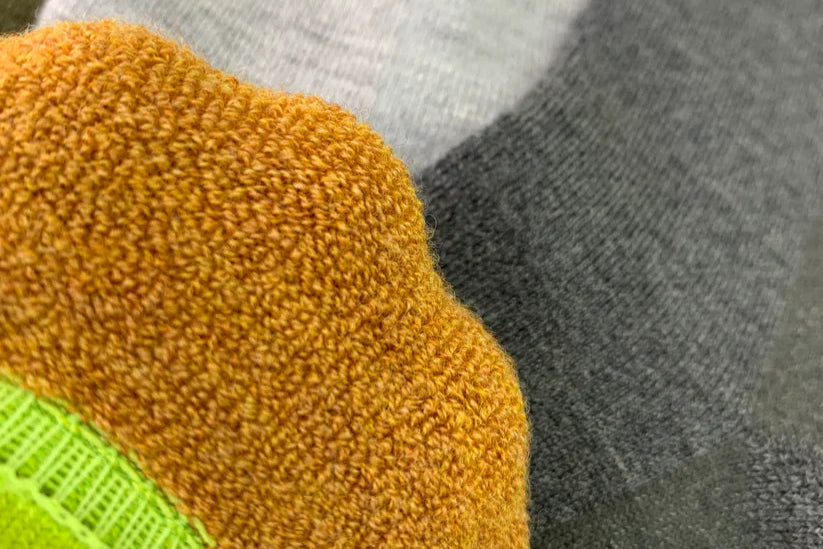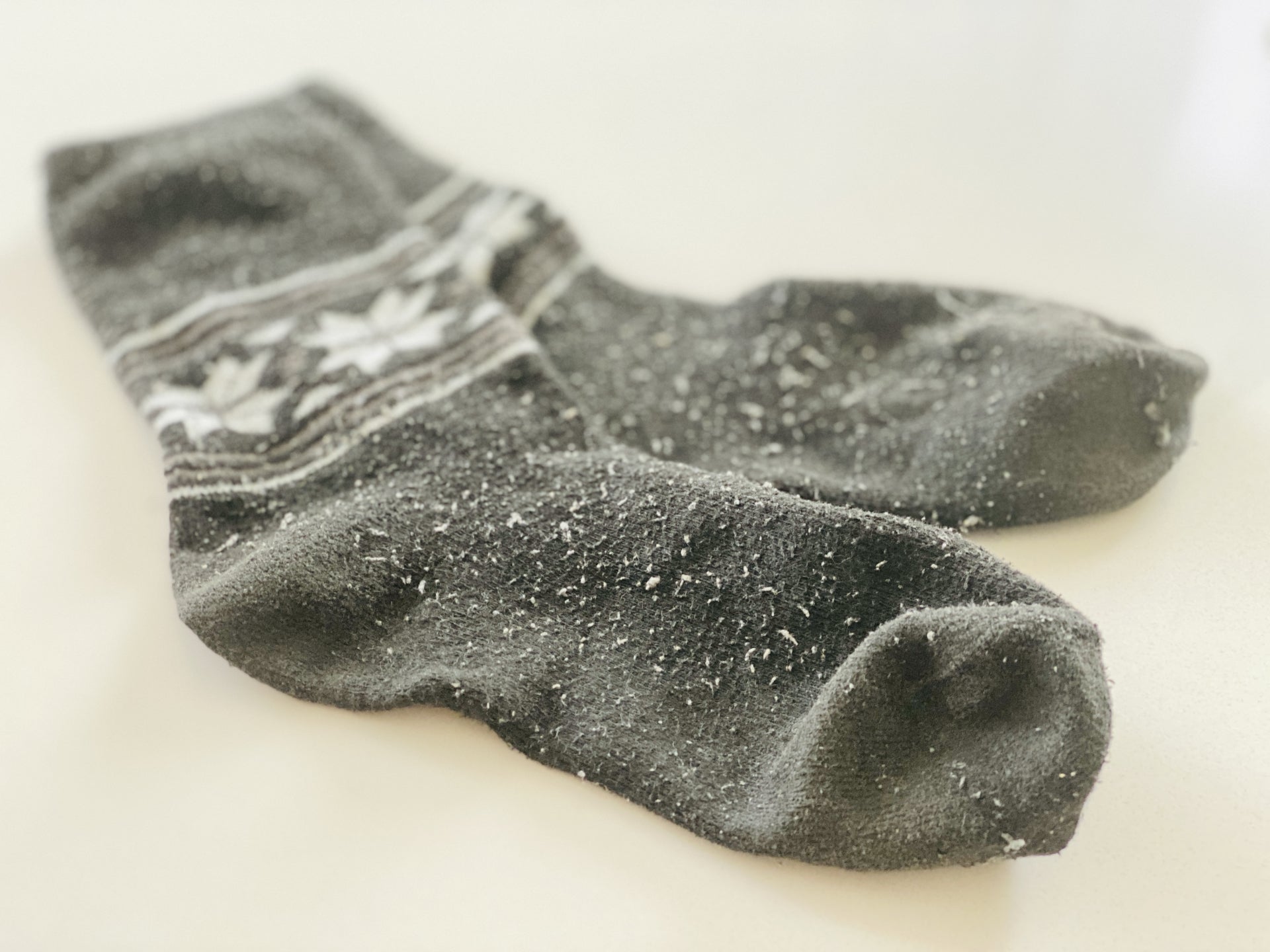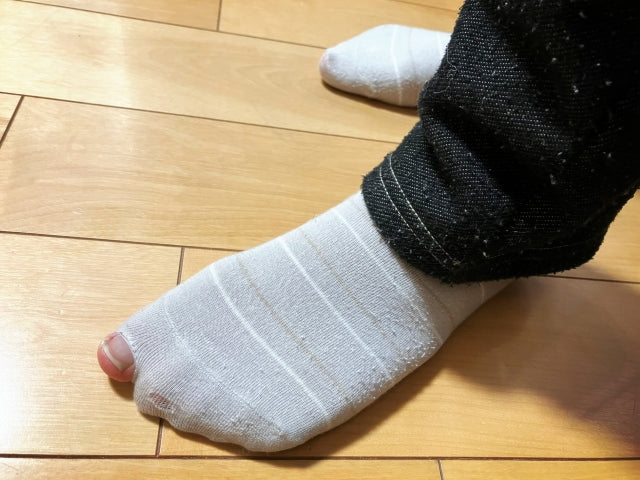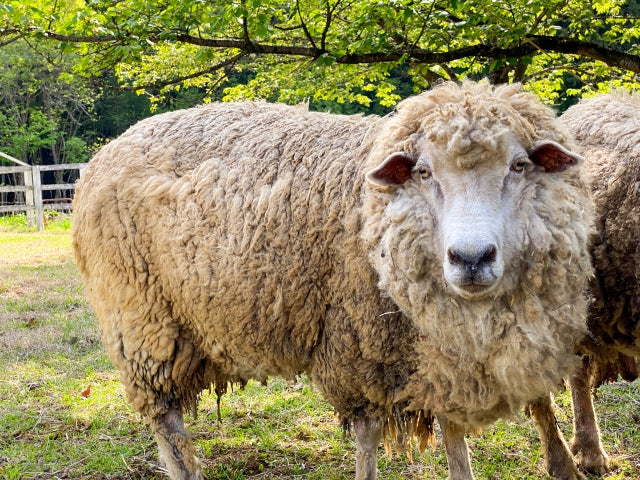Hello. I'm Hiroki, a new staff member.
It's been almost a month since I joined the company, and I feel like I'm slowly gaining more knowledge about socks and textiles. The more I learn, the deeper my knowledge becomes and the broader it gets (´;ω;`)
I have previously introduced wool, but there are more than 1,000 types of sheep and a wide variety of wools. However, the most popular among them is Merino wool . I would like to explain what makes it different and reveal not only the good points but also the bad points.
First, let’s look at the different types of wool.

Tasmania → The white color with few impurities is the appeal
Merino sheep live on the island of Tasmania in Australia, and wool made from Tasmanian wool is called Tasmanian wool. It is characterized by its fine fibers, and wool made from lambs' wool is said to be as soft as cashmere.
Lamb → soft and warm
Merino lambs around 5 to 7 months old are classified as lambs, and the wool from these lambs is called lamb's wool. It has finer fibers than merino wool and is less irritating to the skin.
Shetland → Soft texture grown in cold climates
A small sheep that lives in the cold region of the UK's Shetland Islands. Its outer fur is elastic and firm, while its inner fur is soft, and products made from the inner fur are generally popular.
Gotland → Silk-like texture
Gotland sheep are bred on the Swedish island of Gotland. They are characterized by their grey-grey coat and silky texture, which gives them a glossy sheen.
Corriedale → glossy texture
Corriedale is a sheep that was born from crossbreeding Merino and Lincoln sheep. It is also raised in Japan, and is in demand as food. It is characterized by its glossy, soft texture, and is also used as a raw material for yarn.
Reference page: https://www.folkner.shop/blog/1755/#index_id7
When you line them up, you can see that there are many different types of wool, but Merino wool is the one that is often used in mountain climbing and hiking clothing . What is so good about Merino wool? Let's take a closer look at Merino wool.
The decisive difference is the "feel" of the material, as well as the "heat retention" and "odor prevention" properties.
Basically, it becomes part of the wool, so it has a special power that wool inherently possesses.
- Excellent moisture absorption
- Thermal insulation
- Stretchy and wrinkle-resistant
However, Merino wool has the following characteristics:
- Smooth to the touch
- More insulating than wool
- Deodorizing effect
There is.
The difference in texture is quite noticeable
One of the most common disadvantages of wool is that it feels itchy to the touch . However, because it has wonderful properties such as moisture absorption and heat retention, the itchiness was accepted as unavoidable, but merino wool has put a stop to this.
Merino wool has much finer fibers than conventional wool materials, so it feels better on the skin and is less itchy . (Normal wool is about 24-42 μm, while merino wool is about 17-25 μm.) When it comes to finer merino wool (13-15 μm) , the fibers are comparable to cashmere and feel much better on the skin.
The heat retention is also better than conventional wool, but the difference is hard to notice.
As mentioned earlier, merino wool has finer fibers than conventional wool, so heat is less likely to escape and it has better heat retention . However, it is not obvious that "merino wool is warmer," and there are many aspects of this that are just "perceptions" or "preconceptions" that are common with any product. (I could not find any experimental data comparing wool and merino wool, but I did find comparative data between merino wool and other materials.)
Those who feel it can feel the deodorizing effect.
As a natural fiber, merino wool has anti-odor and immune functions , so it has the benefit of suppressing unpleasant odors. I don't find it unpleasant or anything, and I don't smell that bad to begin with, so I don't notice the anti-odor effects, but maybe some people will really benefit from it.
However, if they have an odor-preventing effect, I think it would be good if everyone wore them when hiking or camping with multiple people staying in tents (laughs).
On the other hand, the disadvantages are the same as those of wool.
Of course, there are not only advantages but also disadvantages.
Pills easily
Because the fibers are spaced apart, they tend to tangle more easily than other fibers, which can lead to pilling and an unattractive appearance.
But don't worry, we have a detailed explanation on how to prevent pilling in merino wool, so please take a look at that.
"Keep them fluffy for longer!" A simple way to remove pilling from merino wool socks
Prone to insect bites
Merino wool is made of hair, so its main component is protein, which makes it a favorite food for insects. In particular, if food scraps, dust, and other dirt are left on the socks, they are more likely to become infested with insects. It's a good idea to thoroughly wash wool socks that you no longer wear as the seasons change.
We also provide information on how to prevent insect damage and how to repair it after it has been damaged.
How to prevent wool from being eaten by moths and what to do after it has been eaten
Difficult to wash
Merino wool becomes hard when washed in water, and the fibers themselves shrink. It also loses the oils in the wool, which can cause it to lose its original texture. If you want to make sure they last longer, it's probably best to take them to a specialist store such as a dry cleaner. (I use wool socks that can be washed, so I wash them on the delicates setting.)
Above, I have explained the advantages and disadvantages of merino wool based on the information I have researched and from actually wearing it.
Compared to regular socks, wool and merino wool socks are expensive, but I felt that they were as good as expected . Recently, rather than wearing them every day, more and more people are wearing them when going out or on important days as part of their fashion wardrobe. (They are now easily available at Workman and Uniqlo.)
If you want to take your fashion and comfort up a notch, be sure to try them on. At OLENO, we also stock a variety of socks made from merino wool, carefully selected by our wool lover (31 years of wool enthusiast experience)! Please take a look.
OLENO Merino wool socks lineup
Thank you for reading to the end.





